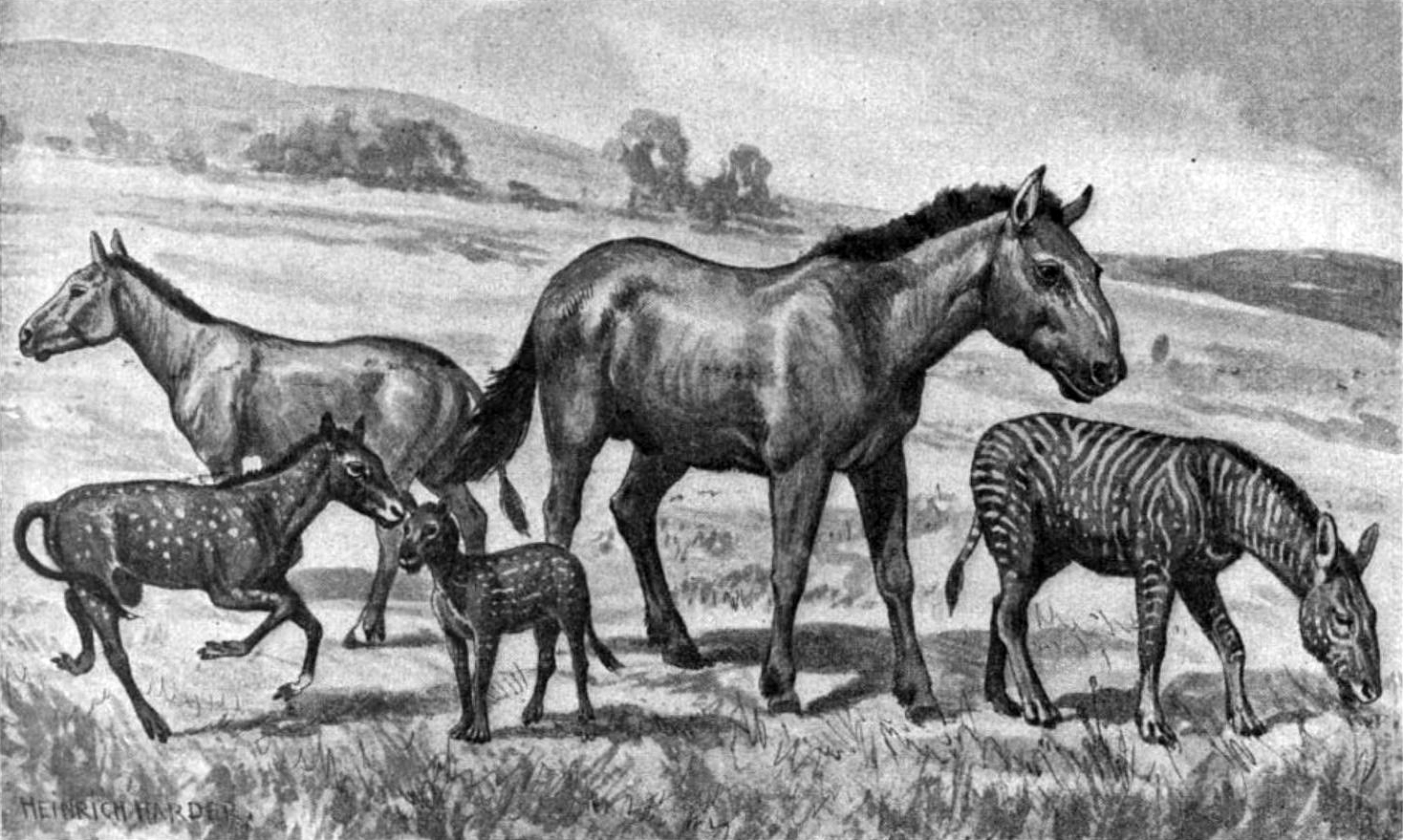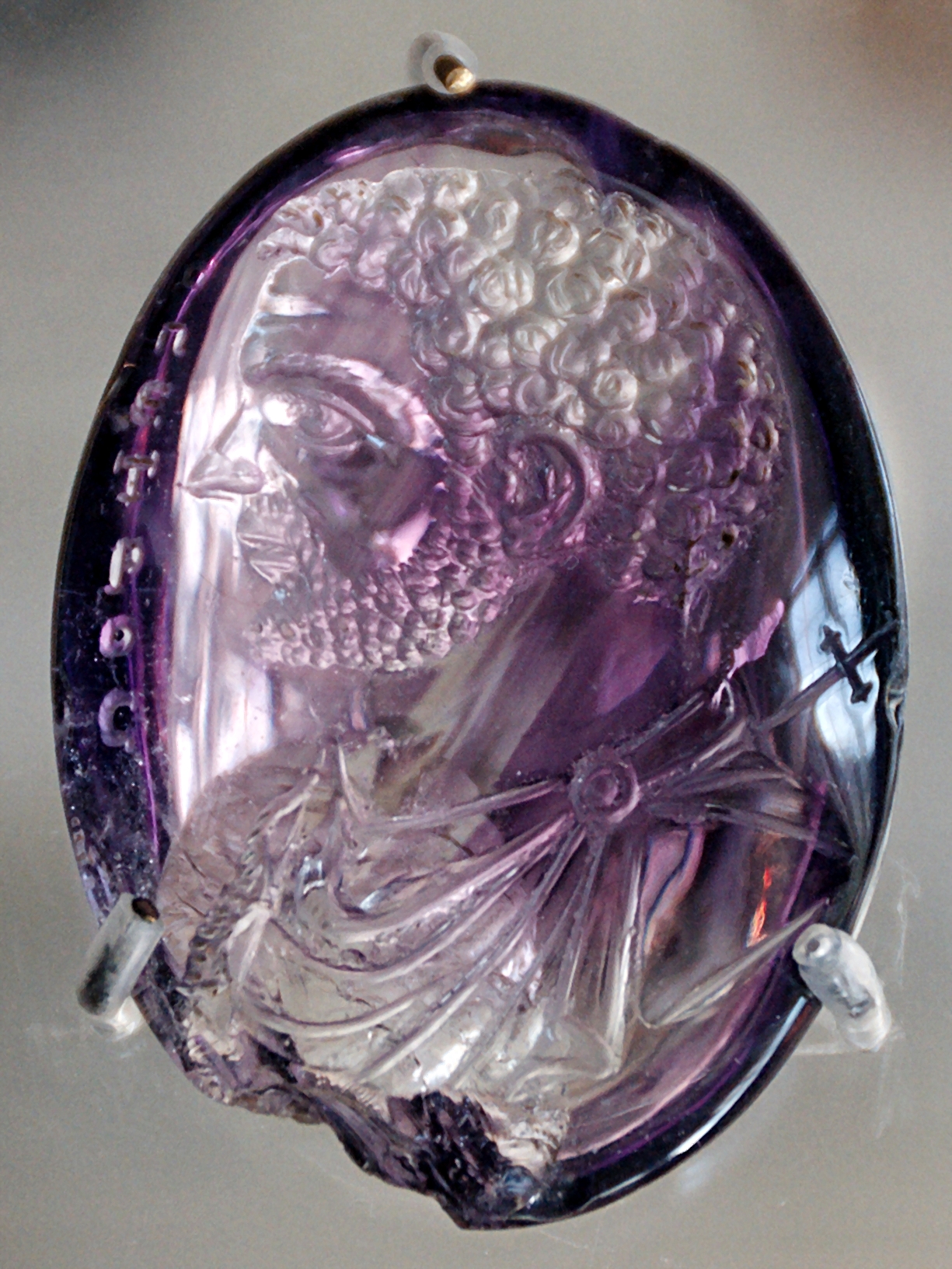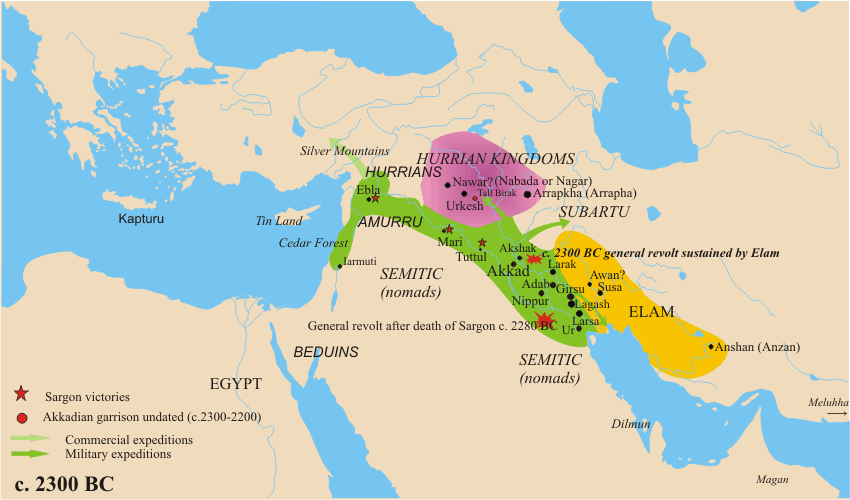|
Tell Brak
Tell Brak (Nagar, Nawar) was an ancient city in Syria; its remains constitute a tell located in the Upper Khabur region, near the modern village of Tell Brak, 50 kilometers north-east of Al-Hasaka city, Al-Hasakah Governorate. The city's original name is unknown. During the second half of the third millennium BC, the city was known as Nagar and later on, Nawar. Starting as a small settlement in the seventh millennium BC, Tell Brak evolved during the fourth millennium BC into one of the biggest cities in Upper Mesopotamia, and interacted with the cultures of southern Mesopotamia. The city shrank in size at the beginning of the third millennium BC with the end of Uruk period, before expanding again around c. 2600 BC, when it became known as Nagar, and was the capital of a regional kingdom that controlled the Khabur river valley. Nagar was destroyed around c. 2300 BC, and came under the rule of the Akkadian Empire, followed by a period of independence as a Hurrian city-state, ... [...More Info...] [...Related Items...] OR: [Wikipedia] [Google] [Baidu] |
Al-Hasakah Governorate
Al-Hasakah Governorate ( ar, محافظة الحسكة, Muḥāfaẓat al-Ḥasakah, ku, Parêzgeha Hesekê}, syc, ܗܘܦܪܟܝܐ ܕܚܣܟܗ, Huparkiyo d'Ḥasake, also known as syc, ܓܙܪܬܐ, Gozarto) is one of the fourteen governorates (provinces) of Syria. It is located in the far north-east corner of Syria and distinguished by its fertile lands, plentiful water, natural environment, and more than one hundred archaeological sites. It was formerly known as Al-Jazira Province. Prior to the Syrian Civil War nearly half of Syria's oil was extracted from the region. It is the lower part of Upper Mesopotamia. Geography During the Abbasid era, the area that makes this province used to be part of the Diyar Rabi'a administrative unit, corresponding to the southern part of Upper Mesopotamia. Kurdistan did not include the lands of Syrian Jazira. The Treaty of Sèvres' putative Kurdistan did not include any part of today's Syria. Political history The French, following the Otto ... [...More Info...] [...Related Items...] OR: [Wikipedia] [Google] [Baidu] |
Akkadian Empire
The Akkadian Empire () was the first ancient empire of Mesopotamia after the long-lived civilization of Sumer. It was centered in the city of Akkad (city), Akkad () and its surrounding region. The empire united Akkadian language, Akkadian and Sumerian language, Sumerian speakers under one rule. The Akkadian Empire exercised influence across Mesopotamia, the Levant, and Anatolia, sending military expeditions as far south as Dilmun and Magan (civilization), Magan (modern Saudi Arabia, Bahrain, and Oman) in the Arabian Peninsula.Mish, Frederick C., Editor in Chief. "Akkad" ''Webster’s Ninth New Collegiate Dictionary''. ninth ed. Springfield, MA: Merriam-Webster 1985. ). The Akkadian Empire reached its political peak between the 24th and 22nd centuries BC, following the conquests by its founder Sargon of Akkad. Under Sargon and his successors, the Akkadian language was briefly imposed on neighboring conquered states such as Elam and Gutian people, Gutium. Akkad is sometimes regar ... [...More Info...] [...Related Items...] OR: [Wikipedia] [Google] [Baidu] |
Levant
The Levant () is an approximate historical geographical term referring to a large area in the Eastern Mediterranean region of Western Asia. In its narrowest sense, which is in use today in archaeology and other cultural contexts, it is equivalent to a stretch of land bordering the Mediterranean in South-western Asia,Gasiorowski, Mark (2016). ''The Government and Politics of the Middle East and North Africa''. }, ), meaning "the eastern place, where the Sun rises". In the 13th and 14th centuries, the term ''levante'' was used for Italian maritime commerce in the Eastern Mediterranean, including Greece, Anatolia, Syria-Palestine, and Egypt, that is, the lands east of Venice. Eventually the term was restricted to the Muslim countries of Syria-Palestine and Egypt. In 1581, England set up the Levant Company to monopolize commerce with the Ottoman Empire. The name ''Levant States'' was used to refer to the French mandate over Syria and Lebanon after World War I. This is probab ... [...More Info...] [...Related Items...] OR: [Wikipedia] [Google] [Baidu] |
Anatolia
Anatolia, tr, Anadolu Yarımadası), and the Anatolian plateau, also known as Asia Minor, is a large peninsula in Western Asia and the westernmost protrusion of the Asian continent. It constitutes the major part of modern-day Turkey. The region is bounded by the Turkish Straits to the northwest, the Black Sea to the north, the Armenian Highlands to the east, the Mediterranean Sea to the south, and the Aegean Sea to the west. The Sea of Marmara forms a connection between the Black and Aegean seas through the Bosporus and Dardanelles straits and separates Anatolia from Thrace on the Balkan peninsula of Southeast Europe. The eastern border of Anatolia has been held to be a line between the Gulf of Alexandretta and the Black Sea, bounded by the Armenian Highlands to the east and Mesopotamia to the southeast. By this definition Anatolia comprises approximately the western two-thirds of the Asian part of Turkey. Today, Anatolia is sometimes considered to be synonymous with Asian ... [...More Info...] [...Related Items...] OR: [Wikipedia] [Google] [Baidu] |
Equidae
Equidae (sometimes known as the horse family) is the taxonomic family of horses and related animals, including the extant horses, asses, and zebras, and many other species known only from fossils. All extant species are in the genus '' Equus'', which originated in North America. Equidae belongs to the order Perissodactyla, which includes the extant tapirs and rhinoceros, and several extinct families. The term equid refers to any member of this family, including any equine. Evolution The oldest known fossils assigned to Equidae were found in North America, and date from the early Eocene epoch, 54 million years ago. They were once assigned to the genus ''Hyracotherium'', but the type species of that genus is now regarded as a palaeothere. The other species have been split off into different genera. These early equids were fox-sized animals with three toes on the hind feet, and four on the front feet. They were herbivorous browsers on relatively soft plants, and already adapte ... [...More Info...] [...Related Items...] OR: [Wikipedia] [Google] [Baidu] |
Engraved Gem
An engraved gem, frequently referred to as an intaglio, is a small and usually semi-precious gemstone that has been carved, in the Western tradition normally with images or inscriptions only on one face. The engraving of gemstones was a major luxury art form in the Ancient world, and an important one in some later periods. Strictly speaking, ''engraving'' means carving ''in intaglio'' (with the design cut ''into'' the flat background of the stone), but relief carvings (with the design projecting ''out of'' the background as in nearly all cameos) are also covered by the term. This article uses ''cameo'' in its strict sense, to denote a carving exploiting layers of differently coloured stone. The activity is also called ''gem carving'' and the artists ''gem-cutters''. References to antique gems and intaglios in a jewellery context will almost always mean carved gems; when referring to monumental sculpture, counter-relief, meaning the same as ''intaglio'', is more likely to be use ... [...More Info...] [...Related Items...] OR: [Wikipedia] [Google] [Baidu] |
Belet Nagar
Belet Nagar ("Lady of Nagar") was the tutelary goddess of the ancient Syrian city Nagar (Tell Brak). She was also worshiped by the Hurrians and in Mesopotamia. She was connected with kingship, but much about her role in the religions of the ancient Near East remains uncertain. Character Belet Nagar means "Lady of Nagar," and much like in the case of Ashur and its god, the name of the deity was the same as that of the corresponding city. Despite her status as one of the head deities of ancient Syria, much about her character and functions remains uncertain. It is assumed that she owed her position in the pantheon to the political importance of her cult center. While in the Old Babylonian period the political importance of Nagar declined, she remained a commonly worshiped deity. In the second millennium BCE in Shekhna she was the tutelary goddess of the local dynasty. For example, in a letter from a certain Ea-Malik to Till-Abnu, ruler of a small kingdom in the Khabur Triangle c ... [...More Info...] [...Related Items...] OR: [Wikipedia] [Google] [Baidu] |
Fertile Crescent
The Fertile Crescent ( ar, الهلال الخصيب) is a crescent-shaped region in the Middle East, spanning modern-day Iraq, Syria, Lebanon, Israel, Palestine and Jordan, together with the northern region of Kuwait, southeastern region of Turkey and the western portion of Iran. Some authors also include Cyprus and Northern Egypt. The Fertile Crescent is believed to be the very first region where settled farming emerged as people started the process of clearance and modification of natural vegetation to grow newly domesticated plants as crops. Early human civilizations such as Sumer in Mesopotamia flourished as a result. Technological advances in the region include the development of agriculture and the use of irrigation, of writing, the wheel, and glass, most emerging first in Mesopotamia. Terminology The term "Fertile Crescent" was popularized by archaeologist James Henry Breasted in ''Outlines of European History'' (1914) and ''Ancient Times, A History of the Early W ... [...More Info...] [...Related Items...] OR: [Wikipedia] [Google] [Baidu] |
Hurrians
The Hurrians (; cuneiform: ; transliteration: ''Ḫu-ur-ri''; also called Hari, Khurrites, Hourri, Churri, Hurri or Hurriter) were a people of the Bronze Age Near East. They spoke a Hurrian language and lived in Anatolia, Syria and Northern Mesopotamia. The largest and most influential Hurrian nation was the kingdom of Mitanni, its ruling class perhaps being Indo-Aryan speakers. The population of the Hittite Empire in Anatolia included a large population of Hurrians, and there is significant Hurrian influence in Hittite mythology. By the Early Iron Age, the Hurrians had been assimilated with other peoples. The state of Urartu later covered some of the same area. Language The Hurrian language is closely related to the Urartian language, the language of the ancient kingdom of Urartu. Together they form the Hurro-Urartian language family. The external connections of the Hurro-Urartian languages are disputed. There exist various proposals for a genetic relationship to other ... [...More Info...] [...Related Items...] OR: [Wikipedia] [Google] [Baidu] |
Semitic People
Semites, Semitic peoples or Semitic cultures is an obsolete term for an ethnic, cultural or racial group.On the use of the terms “(anti-)Semitic” and “(anti-) Zionist” in modern Middle Eastern discourse, Orientalia Suecana LXI Suppl. (2012) b Lutz Eberhard Edzard "In linguistics context, the term "Semitic" is generally speaking non-controversial... As an ethnic term, "Semitic" should best be avoided these days, in spite of ongoing genetic research (which also is supported by the Israeli scholarly community itself) that tries to scientifically underpin su ... [...More Info...] [...Related Items...] OR: [Wikipedia] [Google] [Baidu] |


.png)






